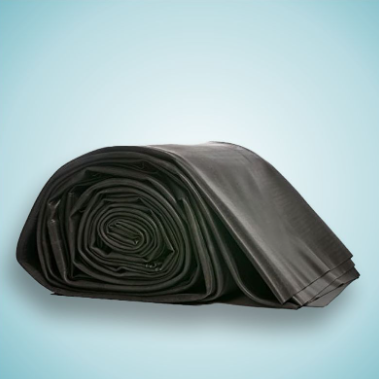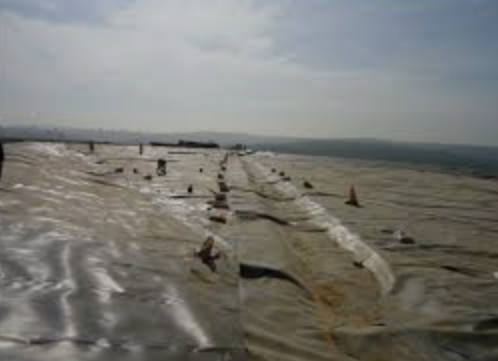- Understanding the Role of Geomembrane Liners in Waste Management
- Innovations in Geomembrane Liners for Water Management
- Geomembrane Liners: A Comprehensive Guide
- The Future of Geomembrane Liners in Civil Engineering
- Geomembrane Liners: Enhancing Landfill Stability
Manager:Alvin Wang
WhatsApp:+62 8983806051
Tel:+86 10-5797-1075
Email:steelwang@okorder.com
Address:3rd Floor, No.2 Building, No.1 Sanlihe Road
What happens when HDPE geomembrane is burned?
High Density Polyethylene (HDPE) geomembrane is known for its durability, flexibility and capacity to withstand environmental pressures. However, like any other material, this type of geomembranes undergo certain changes while being subjected to fire or combustion. This study examines what happens when the hdpe Geomembrane is burned by looking into its behavior during burning; investigating factors that influence combustion of geosynthetics such as HDPE liners used in landfills among others and answering the question ‘what happens when it burns?’

Understanding HDPE Geomembrane
Composition & Characteristic:
HDPE Geomembrane comprises ethylene monomer units which make up thermoplastic polymers. It has high strength, flexibility and chemical resistance properties hence widely used for containing materials like lining landfills, ponds dams covers etcetera where there might be need for impermeable barriers against liquid or gas migration so as to ensure environmental safety together with structural stability.
Thermal Properties:
The behaviour of HDPE geosynthetic under heat can best be explained through its thermal features\ർmperature softens but re-solidifies upon cooling this is because they are thermoplastic materials. The melting point usually ranges from 120 °C – 135°C (248°F – 275°F) depending on different grades/formulations used.
Behavior When Burned
Combustion Process:
During exposure to heat sources such as flames resulting from fire outbreaks; chemical compounds within them start changing their physical states either chemically or physically while releasing huge amounts of energy in form light and heat.As a result various kinds of chemical reactions take place involving decomposition sometimes referred ൌ breakdown products\൮itially soften deform since it gets close melting point due presence high temperatures produced by fires.When more heat applied beyond specific level pyrolysis occurs where polymer chains break down further giving off Volatile Organic Compounds (VOCs) as well as Carbon Monoxide (CO), Methane (CH4), Ethylene (C2H4) etcetera.
Release of Gases:
Different types flammable gas can be discharged when HDPE is burned. Usually they include but not limited to ethylene, methane, carbon monoxide and dioxide among others. The presence these gases may lead into burning for longer time since it supports continuous combustion process through flame creation.The heat energy produced during this reaction is used up by surroundings which causes rise in temperature so as maintain fire thus generating more smoke than before; different conditions produce various amounts of light, heat and smoke forms part products released during burning depending on the environment surrounding combustible material being burnt.
Smoke Generation:
The combustion process of HDPE geomembrane results in smoke production consisting particulate matter; aerosols and harmful gases too. The composition of such smokes varies according to temperatures involved among other factors such as oxygen availability or use additives like fillers within them. Inhalation firefighting personnel exposed to fumes emitted from burning plastic sheeting can pose significant health risks while responding emergencies near it may also have their lives endangered due inhalation toxic chemicals contained in those fumes.\൴he fire service should take necessary precautions ensure that firefighters are equipped with appropriate respiratory protective equipment when attending incidents involving this type hazardous materials.
Formation of Residues:
Char and ash residues are left behind after completing the process of burning HDPE geomembranes. Partially decomposed polymer chains along with carbonaceous materials form part char layer which could act as thermal insulator thereby protecting \nunderlying objects even more so if there were no ashes present at all.\nAsh residue would contain inorganic minerals together filler substances employed during manufacturing process for example extrusion type etcetera.
Environmental Impact
Air Emissions:
The burning HDPE geomembrane emits several air pollutants including volatile organic compounds (VOCs), hazardous air pollutants (HAPs) such as carbon monoxide gas, carbon dioxide gas and many more. These emissions are harmful to the environment causing pollution of the atmosphere which in turn affects human beings’ health negatively thus; ventilation systems need to be installed at all times where there is probability that this material may catch fire so as control its impact on our surroundings.
Soil & Water Contamination:
The leftover bits of incinerated HDPE geomembrane like soot and ash may be contaminated with heavy metals, organic compounds, and combustion products. These remnants can mix in with the ground or water and cause pollution as well as other types of damage to the environment. It is important that we dispose of them properly while also cleaning up any places where they have burned down in order to save soil quality from deteriorating further than it already has been.

Conclusion
Basically, this implies that a lot happens when you burn an HDPE geomembrane. It releases gases; creates smoke; leaves behind different kinds of waste materials; and affects surroundings among others. Additionally, heat/light is produced during combustion as well as dangerous substances which pose risks to health as well as ecological balance. Therefore through understanding what takes place when this material burns and coming up with applicable fire prevention techniques; engineers together with environmental experts will be able to reduce incidences related fires involving HDPE installations used for lining landfills.
-
2024-12-05Geomembrane Liners: A Comprehensive Guide






